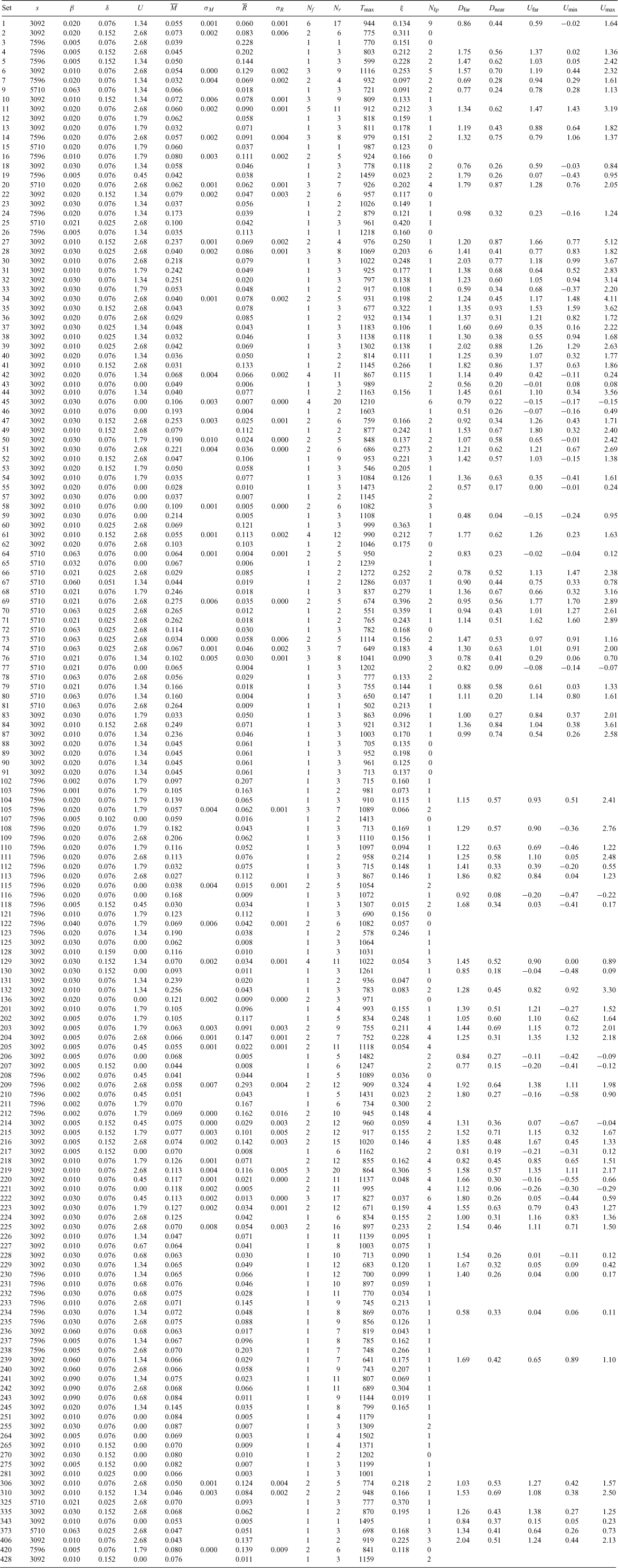Convective heat transfer in fire spread through fine fuel beds
W. R. Anderson A , E. A. Catchpole A and B. W. Butler B CA University of New South Wales at ADFA, Canberra, ACT 2600, Australia.
B US Forest Service, Rocky Mountain Research Station, 5775 Hwy 10 W, Missoula, MT 59808, USA.
C Corresponding author. Email: bwbutler@fs.fed.us
International Journal of Wildland Fire 19(3) 284-298 https://doi.org/10.1071/WF09021
Submitted: 21 February 2009 Accepted: 21 October 2009 Published: 13 May 2010
Abstract
An extensive set of wind-tunnel fires was burned to investigate convective heat transfer ahead of a steadily progressing fire front moving across a porous fuel bed. The effects of fuel and environmental variables on the gas temperature profile and the ‘surface wind speed’ (gas velocity at the fuel bed surface) are reported. In non-zero winds, the temperature of the air near the fuel bed surface decays exponentially with distance from the fire front. In zero winds, the temperature decreases rapidly within a very short distance of the flame front, then decays slowly thereafter. The maximum air temperature decreases as the free stream wind speed, packing ratio and fuel moisture content increase. The characteristic distance of the exponential decay increases strongly with the free stream wind speed and decreases with the packing ratio and surface area-to-volume ratio of the fuel. The surface wind speed depends strongly on the free stream wind speed, and to a lesser extent on packing ratio, fuel bed depth and fuel moisture content. There are three general regimes for the surface flow: (1) a constant velocity flow of approximately half the free stream flow, far from the flame front; (2) an intermediate zone of minimum flow characterised by low or reversed flow; and (3) a region near the flame front where the velocity rises rapidly almost to the free stream velocity. The boundaries between the three regions move further from the flame front with increasing wind speed, in a way which is only slightly affected by fuel geometry.
Additional keywords: characteristic heating distance, kiel-static probe, radiation, thermocouple, wildland fire, wind tunnel.
Acknowledgements
This research was supported by funds from the Joint Fire Science Program and the US Forest Service. We thank Patricia Andrews for securing the funding. We also thank Bob Schuette, Paul Sopko, Merlin Brown, Kyle Shannon and Glen Morris for all their work constructing the fuel beds, setting up the instrumentation and processing the data.
Albini F (1985) A model for fire spread in wildland fuels by radiation. Combustion Science and Technology 42, 229–258.
| Crossref | GoogleScholarGoogle Scholar |
Catchpole WR, Catchpole EA, Rothermel RC, Morris GA, Butler BW , Latham DJ (1998) Rate of spread of free-burning fires in woody fuels in a wind tunnel. Combustion Science and Technology 131, 1–37.
| Crossref | GoogleScholarGoogle Scholar |
Collis D , Williams M (1959) Two-dimensional convection from heated wires at low Reynolds numbers. Journal of Fluid Mechanics 6, 357–384.
| Crossref | GoogleScholarGoogle Scholar |
Marcelli T, Santoni PA, Simeoni A, Leoni E , Porterie B (2004) Fire spread across pine needle fuel beds: characterization of temperature and velocity distributions within the fire plume. International Journal of Wildland Fire 13, 37–48.
| Crossref | GoogleScholarGoogle Scholar |
Morvan D , Dupuy J (2004) Modeling the propagation of a wildfire through a mediterranean shrub using a multiphase formulation. Combustion and Flame 138, 199–210.
| Crossref | GoogleScholarGoogle Scholar |
Raupach M , Shaw R (1982) Averaging procedures for flow within vegetation canopies. Boundary-Layer Meteorology 22, 79–90.
| Crossref | GoogleScholarGoogle Scholar |
Seron FJ, Gutierrez D, Magallon J, Ferragut L , Assensio MI (2005) The evolution of wildland forest fire front. The Visual Computer 21, 152–159.
| Crossref |
A Beds burned under quiescent conditions (no wind) varied from 4.0 to 7.5 m in length, which is of the order of 100 times the flame zone depth.
B Values of fuel particle density (ρp) of 510 kg m–3 for the pine needles and 398 kg m–3 for the excelsior were used; see Catchpole et al. (1998).
Appendix
The table below shows averages over each set of fires (with constant fuel and environmental conditions), of the quantities used in the paper. A bar denotes the average value in a set, and σ denotes a s.d. Thus, for example,
Some of the rows in the data table do not have entries for some variables, in particular for gas flow variables, because the traces were anomalous. Some sets consist of only one burn experiment; therefore s.d. for moisture content or rate of spread could not be calculated.

|


